Landscape design is a whole science that requires special attention and careful approach. Each gardener and simply the owner of the household plot tries to create a unique garden composition that would include a large number of different plants. In addition to bright and spectacular blooming crops, there are often less colorful decorative plants on sites, which at the same time harmoniously fit into any design. It is to such cultures that the purple of the Byzantine or purity is a woolly - a low and very unusual plant that resembles a hare or sheep ears.
Content |
Beautiful oblong leaves are completely covered with silver felt, and high color paints in the form of spikelets rise above the leaves and delight with their flowering.
Cleancier Byzantine - valuable culture for landscape designers. To properly grow this unique plant, consider the features and description of the purity of Byzantine, we note the characteristics of popular varieties of culture and give important rules for agrotechnika cultivation.
Features and description of the purity of Byzantine
Cleancale is an extensive genus of semi-staples or herbian perennial and annual plants, which belong to the family of Clanotkov. Cleannoe Byzantine is a perennial herbaceous rhiza plant, which has high decorative qualities and value. The natural area of \u200b\u200bhabitat is the territory with a temperate climate of Eurasia, North and South America and Africa. The most popular view of the purple of the Byzantine in nature was widespread in the southern part of Russia, in Transcaucasia and in some regions of the Mediterranean. To date, more than 300 varieties of purity have been known, which spread almost all over the world and began to be grown as a decorative and medicinal plant.
Cleannie Byzantine has a number of names, among which purity is woolly or stachis. In the people, it is often possible to hear that this decorative plant is called "haunted ears" or "sheep's ears". This name is the purple of Byzantine received due to its decorative foliage, which from the very beginning of the vegetation is tightly covered with silvery hairs. To the touch leaves are soft and pleasant. The plant received its scientific name "Stakhis" due to the form of inflorescences that remind spikelets. Translated "Stakhis" means "spoke".
Cleaning the Byzantine was widespread in landscape design due to the fact that it fits perfectly into any garden composition. Silver Silk Carpet The Screwed Cabelancy Cooks will become an excellent background for brighter flowering plants or harmoniously fit into an ensemble with an artificial reservoir. Gardeners in recent years use this plant not only as a decorative component of the landscape, but also as a medicinal culture.
Description of the Church of Byzantine:
- Cleannoe Byzantine is a perennial herbaceous soil plant, which has a high decorative value.
- This plant belongs to creeping cultures, since the rhizome of the purity very quickly grows into the curtains to 1 m in diameter. This feature is used to create beautiful compositions, where purple Byzantine acts as a spectacular background.
- The root culture system is rather long, but weakly branched, goes deep into the ground vertically. Young tubers that can be used to reproduce this plant appear on thickened root shoots.
- The height of the entire plant is formed by the sizes of shoots with leaves and flowers. The purity of the Byzantine in height can reach only 20-30 cm, however, high blooms up to 30-40 cm in height rise during flowering over the leaves. Therefore, the overall height of the chest of purity can reach 50-60 cm.
- The bustice is formed by dense and thick shoots that have a small branch and contribute to the rapid growth of the plant. Stems durable, have 4 faces.
- The leaves of the Celebrate of Byzantine are the main decoration and value of the plant. Leaves are roasting and stem. They differ slightly in size and shape.
- The root leaves have a lancing or heart-shaped form, can reach 10-12 cm. They are attached to short stiffs and are located on the shoots.
- Streamy leaves have a lanceolate-ovoid shape and in size can be slightly smaller than root.
- There are varieties of the purity of Byzantine with large leaves, which can grow up to 25 cm long.
- All the leaves are painted in a monophonic gray-green shade and are tightly covered with long pillings of a silver shade, thanks to which the leaves seem like felt and resemble animal ears.
- During the flowering of the Celebrate of the Byzantine, which falls at the end of June or the beginning of July, long blossoms appear on the plant, reaching a length of 30-40 cm. At the ends of the color seeds are blooming long up to 20 cm inflorescences in the shape of spikelets.
- Flowers are small, have the shape of a bell collar cup with five pointed petals, in diameter can reach 1 cm. The shade of the color of the Vizantine Celebrate can be gentle pink or pale-lilac.
- Flowering of this plant lasts for about two months until the of September. The flowers have a pleasant aroma, which is distributed throughout the site.
- Many gardeners remove the flowers before flowering, thereby increasing the number of decorative leaves. This is due to the fact that during flowering, bushes can become loose and less beautiful.
- After flowering at the scene of the inflorescence, an oval nuts with three faces are formed, in which the seeds of the purity of the Byzantine ripen. They can be used to reproduce the culture.
- This culture is characterized by good-resistant to cold and frost resistance, which allows you to grow a decorative plant in a moderate climate of the middle strip of Russia.
- Cleancier Byzantine or purity is used to create landscape design. Gardeners use it for the framing of garden tracks and borders, for decorating rocaries and alpine slides, as a soil plants. It looks great, this plant as a solitator, in this case it creates a silver carpet from its unusual leaves.
Variety of decorative varieties of the Vizantine
Cergone widely spread throughout the world and gained popularity from gardeners and landscape designers. This prompted the breeders of all over the world to make new types and varieties of Pisel. It also concerns the Celebrate of Byzantine, in the line of varieties of which there are very unusual and interesting plants worthy of the attention of true connoisseurs of unusual cultures. Consider the characteristics of the most popular varieties of the Piece of Byzantine.
- The variety of the Celebrate of Byzantine "Silver Carpet". One of the most popular varieties of decorative culture, whose name itself speaks of its capabilities and appearance, about the ability to grow in the form of a carpet. It is a compact variety, the height of the plant can maximally reach 15 cm. In the period of active vegetation, the plant will quickly grow and forms a dense and sufficiently thick carpet from jet-green leaves with a high silver pile. This variety of the purity of flowers does not forms.
- Visant "Big Ears". It is a compact and low bush, the main feature of which long leaves are considered. In length, one sheet plate can reach about 20-25 cm, due to which the foliage resembles the ears. Leaves of a jet-green shade with a silver pile on the surface.
- The variety of the Celebration of the Byzantine "Striped Phantom". This variety is different from other representatives of the type of colorful of their leaves. On the gray-green monophonic surface of the sheet, light longitudinal stripes are clearly visible. Due to this, Striped Phantom varieties refers to the volatile varieties of purity.
- The variety of the Cotton Ball of the Byzantine "Cotton Ball". Translated the name of this variety literally denotes the "Ball or Cotton Ball". This is due to the fact that the flower muts during the dissolution resemble cotton boxes.
- The variety of the Piece of the Byzantine "Sheila Macqueen". According to some information, this plant variety was named after the famous florist in the 40-60s, which worked at the Royal Yard in the UK. It is a compact low-speed plant that does not tie colors.
- Sort "Sheep Ears". This variety of the Celebration of Byzantine was named this way due to the similarity of the leaves of the plant with soft and fluffy animal ears. Compact bush up to 30 cm in height. It blooms with gentle lilac pink small flowers, which in diameter are maximally reach 1 cm.
- The variety of the purity of the Byzantine "Primrose Heron". This variety of plants differs from other representatives of the type of color of their foliage. In the spring, at the very beginning of the vegetation, the foliage has a yellowish shade, over time, the leaves become the usual joing-green color. During flowering on long blossoms, small pink flowers bloom.
- Variety of the purity "Silky Fleece". This plant in height can reach 25-30 cm. It is a beautiful and compact bush, the leaves of which have a white shade and densely covered with long silver swallows.
- Variety "Marlevel". This is a tall variety of the purity of the Byzantine, whose stalks are in height can reach 50-60 cm.
This is only a list of the most popular varieties of the cleansery of woolly among gardeners and landscape designers of Russia, which are often used to create bright and spectacular garden compositions. In addition to them, this type of plant boasts a large variety of varieties.
The reproduction of the Piseline of Byzantine: the most common ways
Grow the clarity Byzantine independently on its plot will not be much difficult for any gardener. For this, it is enough to have a desire and some free time, as well as knowledge of the most common methods of reproduction of this culture. It is possible to breed the purple of this species using seeds or vegetatively. Consider the characteristic of the breeding options for the plant.
Seed reproduction of the purity of Byzantine
- This method is often used by gardeners, since the seeds are easily tied on the plant. In addition, the sowing itself should not cause difficulties. And if an adult plant of the Piece of Byzantine is growing in your site, then you can wait for Samoshev and transplant the shoots that appeared for a permanent place.
- Seeds can be soiled directly into open soil on the prepared bed in the southern regions of Russia or in seedlings containers in more northern areas.
- The planting material can be purchased in a specialized garden shop or assemble independently with adult bustle after fruit and ripening fruit. In the last version, the main thing is not to miss the moment of ripening, since otherwise the seeds dispel around the bustle.
- Strategy does not need to strategy.
- The seed seeds of the Vizantine seed can be proceeding in mid-February or early March.
- Prepare a spacious container and fill it with fertile and nutritional soil consisting of sand and peat. The soil surface is important to moisten from the pulverizer well.
- Next, the seeds are uniformly sown on the surface and sprinkle with sand slightly. At the same time, the main thing is not to fasten the sand too much, the layer should be thin.
- The container with crops is necessary to cover with a film or glass and put into a warm room with a temperature of not lower than 25 degrees.
- During the germination of seedlings, it is important to maintain room temperature and humidity, and watering is minimal. After a week, the first sprouts will appear.
- A month later, there will be full seedlings in the container, which, if desired, can be switched. Cleannoe Byzantine is well tolerates transplant.
- In the open soil, young sprouts of the purity of this species are planted at about May, when the threat of return freezers passes, since because of them, the plant may die.
The reproduction of the purity of the Byzantine stalling
- Quite often, the clarity of the Byzantine is breeding with young cuttings. It is possible to carry out this method of reproduction throughout the warm season: in spring, summer or at the beginning of autumn.
- You can use root leaves or lower stems with 2-3 leaves as cuttings. According to the experience of many gardeners, the cuttings of the purity quickly and successfully take root and are tested.
- Leaves or shoots with small leaves should be 10-12 cm long.
- Prepare a container with a nutritional soil consisting of sand and peat, after which it is well moistive.
- Shorten the cuttings at a small angle in the prepared ground, after which put boxes in a greenhouse or a greenhouse.
- Further care should include ventilation of cuttings and moderate watering. It is definitely important to monitor the level of watering so that the cuttings do not start rot.
- The rooting of cuttings occurs within 2-3 weeks. It can be seen on new shoots that cuttings begin to produce.
- After the appearance of own roots, young plants can be planted at a permanent place.
The reproduction of the purity of the Byzantine division of the bush
- The easiest way to breed the purity of the Byzantine is considered to divide the bush or rhizoma of the plant.
- If an adult plant is growing in your site and you want to rejuvenate it, you can use this option.
- Valid rhizer is recommended early in the spring after full heating of soil and air or at the end of August or in early September. At the same time, it is necessary to conduct division into cloudy weather or early in the morning when the sun has not yet risen.
- Gently dig up an adult plant and put it on the surface of the earth. After that, slightly smooth the earth with the roots and the knife divide the rhizome.
- All sections can be treated with reversible coal and young decenes fall out in advance prepared places.
- After landing, the decene is important to water very carefully, trying not to hurt the leaves.
Reproduction of the purity of the Byzantine tubers
- Rhizome of the Celebration of Byzantine forms small side tubers, which can also be used for reproduction. This option is applied if you decide to nail your landing, the rhizome of unnecessary plants can be used for breeding.
- Tubers need to be carefully separated from the entire rhizoma and clear a little from the soil and husk.
- After that, you can prepare a garden in a permanent place and make a depression in it in the form of a depth of 5-7 cm.
- The tubers are placed in the groove and sprinkle with nutrient soil and humus.
- After landing, the garden is important thoroughly pouring.
- For the next planting, tubers can be collected in an adult plant with simple digging.
Landing of the Piece of Byzantine
Cleancier Byzantine is a beautiful and decorative bush, which fits perfectly into any landscape design. At the same time planting a culture will take at least time and effort, and in the future the purity will delight you with its unusual beauty. To get a healthy and strong plant, it is important not only to properly plant seedlings, but also to spend competent preparatory work. Consider the entire process of holding the landing of the Piece of the Byzantine at individual stages.
Stage 1. The choice and purchase of the sealer of the Byzantine
- First of all, each gardener needs to purchase high-quality and healthy planting material.
- If an adult plant of this species is already growing in your site, you can use one of the above methods of reproduction.
- If you don't have an adult busta and you do not have the desire to teach culture, then you can buy ready-made seedlings or seedlings of the Celebrate of Byzantine in specialized garden shops or nurseries who are professionally engaged in plant breeding.
- Most often, seedlings are sold in the form of seedlings in individual pots.
- Before buying, it is important to carefully check the appearance of the planting material. On young seedlings should not be visible damage, yellow or fallen sites. Soil in pots must be clean and wet.
- Choosing the selection of the Celebrate of Byzantine, pay attention to the botanical features and the appearance of a particular variety. So you can choose a suitable plant for you both in altitude and in the color of foliage and colors.
Stage 2. Choosing a place to land for the Piece of the Byzantine
- The second important step is to choose from your site most suitable for landing space.
- Cleannie Byzantine prefers to grow at open solar places, where there is constantly plenty of sunlight and heat. This allows you to get a beautiful neat bush with large and silvery leaves.
- You can land this culture and in a light half, but in this case the size and color of foliage will be more scarce.
- It is important to plant seedlings of this species on small hills or slopes, where there is no constant water stagnation, which can be destructive to affect the plant itself.
Stage 3. Choice and preparation of the soil for landing the purity of Byzantine
- The purple of the Byzantine is considered an unpretentious plant, which is perfectly leaving for any soils. It will grow on sandy soils, on stony or drum soils.
- Ideally, it is recommended to plant young seedlings on lightweight, moisture-permeable soils with a neutral or alkaline reaction.
- If the selected area of \u200b\u200bthe soil with an acidic reaction is selected, then it is recommended to deoxine it using charcoal or lime.
- The main condition for choosing the soil for planting the purity of the Byzantine is a good drainage, since this plant does not carry out stagnation of water from the roots.
- Before boarding, it is necessary to carefully switch the selected place by you about two bayonet shovel, since the root plant of the plant is quite long.
Stage 4. Landing Technology of the Celebration of Byzantine
- Planting seedlings of this plant in open soil is recommended in May after the threat of return freezers.
- At the selected section, it is necessary to prepare landing points, the size of which should be a little more of the root system of seedlings.
- It is important to remember that the landing wells must be placed at a distance of 15-20 cm from each other to give a place to grow bushes.
- At the bottom of each pit, pour a small layer of drainage, which can consist of small stones or gravel.
- Next, pour the layer of the soil mixture consisting of sand, peat and humus.
- Saplings in pots must be abundantly abundantly, and then turned along with an earthen room in the wells.
- On the resulting Kholmik, put a sighter of the cleansers and carefully sprinkle it soil.
- After planting, young plants are abundant.
Grinder of cultivation of the Vizantine: Secrets and Nuances of Care
Caring for the purple Byzantine will not require much effort or a large number of your time. It is enough occasionally to give him your attention and in response you will get a beautiful and very decorative plant.
- Watering. Cleaning the Byzantine does not endure the stagnation of water in the roots, so it is necessary to water this plant very neatly, moderately. It is recommended to water the plants only during drought. At another time, moisture roots are quite enough. You can use a slightly different watering mode: once a week with small doses, with a strong drought the amount of irrigation increases.
- Swimming. Regularly the soil around the plants are recommended to loose and dip, since you increase the inflow of oxygen to the roots.
- Feeding Cleaning the Byzantine quietly refers to fertilizer. It is enough one or twice a season to make a reworked manure or complex mineral fertilizer.
- Trimming. In the spring it is important to remove last year's dry leaves. Also, throughout the season, it is necessary to closely monitor the shoots of the plants that need to trim if they grow greatly. If you want to see a beautiful and compact bushing without proglin, then it is recommended that the color of the flowers appear before the appearance of colors. Thus, you also get rid of self-saming and headaches from the removal of the weeds of the Church.
- Preparation for winter. In the southern regions, Cergolas the Byzantine does not need further shelter, the exception is young seedlings, which can be covered with spruce legs or foliage. In more northern regions, plants for the winter are necessarily hidden.
Cleanie Vizantine - Photo
Cleannoe Byzantine is a beautiful and unusual plant, which without much efforts in the cultivation will delight you with spectacular leaves and harmonious common appearance.

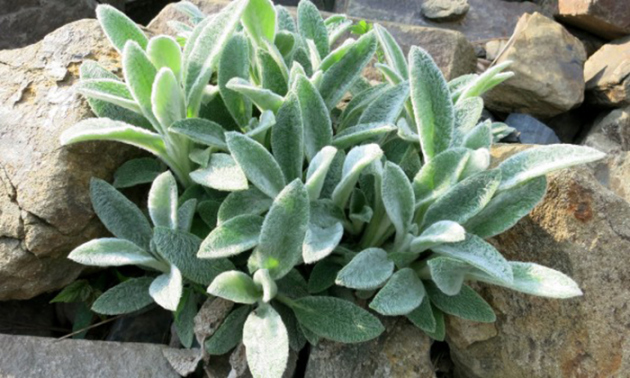
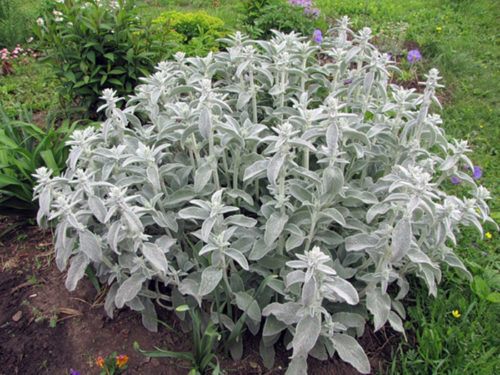
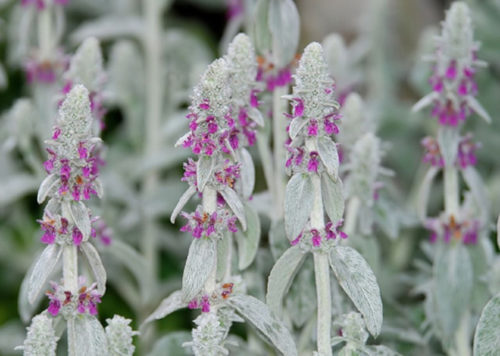
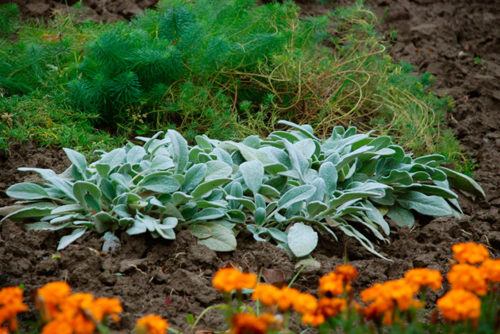
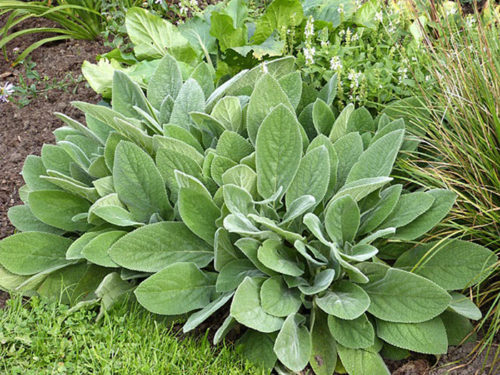
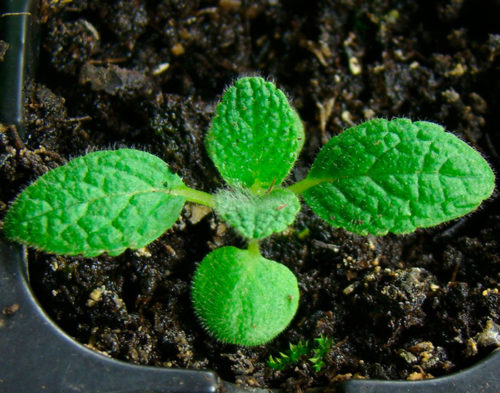
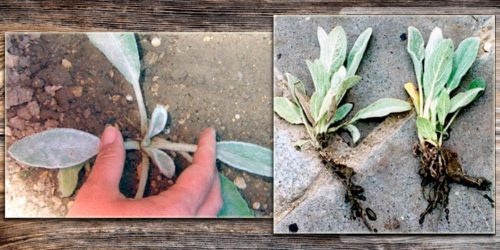
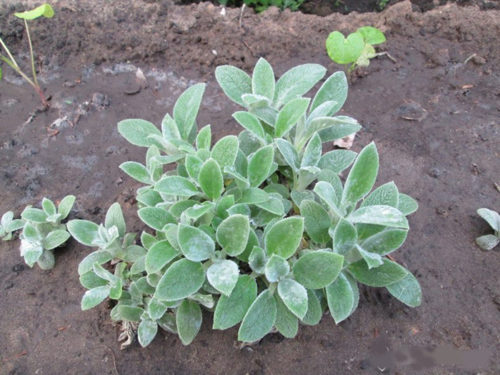
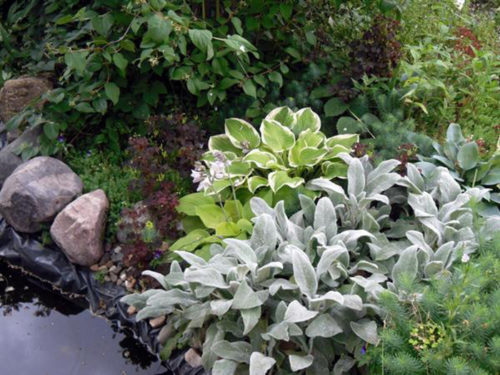
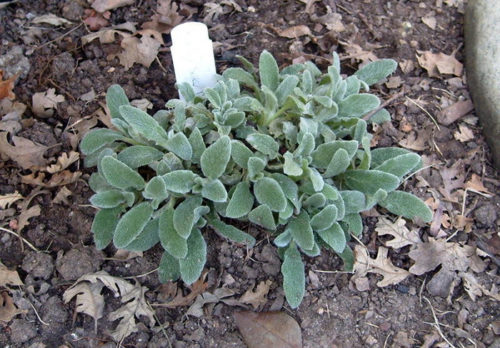
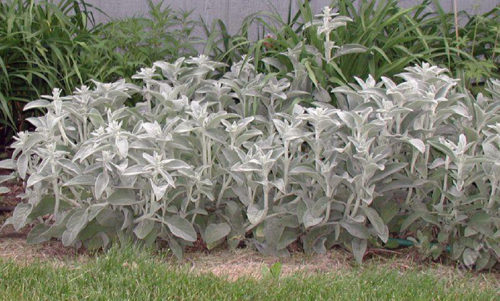
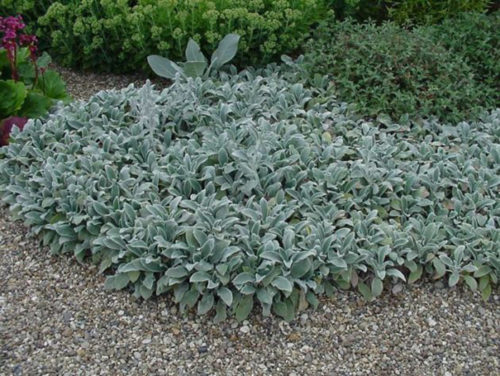

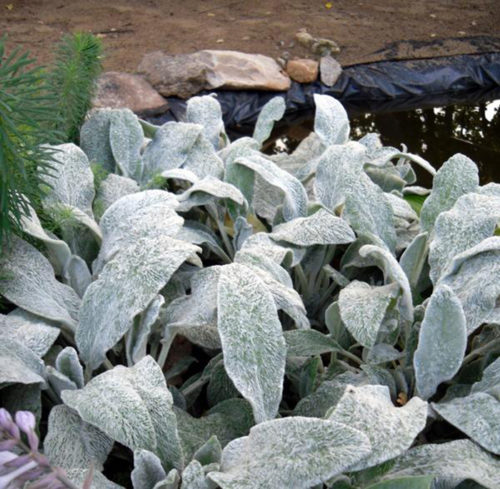
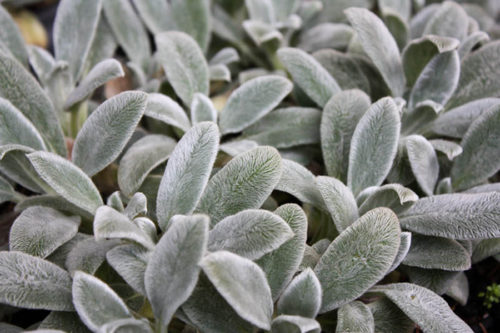












 Start a discussion ...
Start a discussion ...